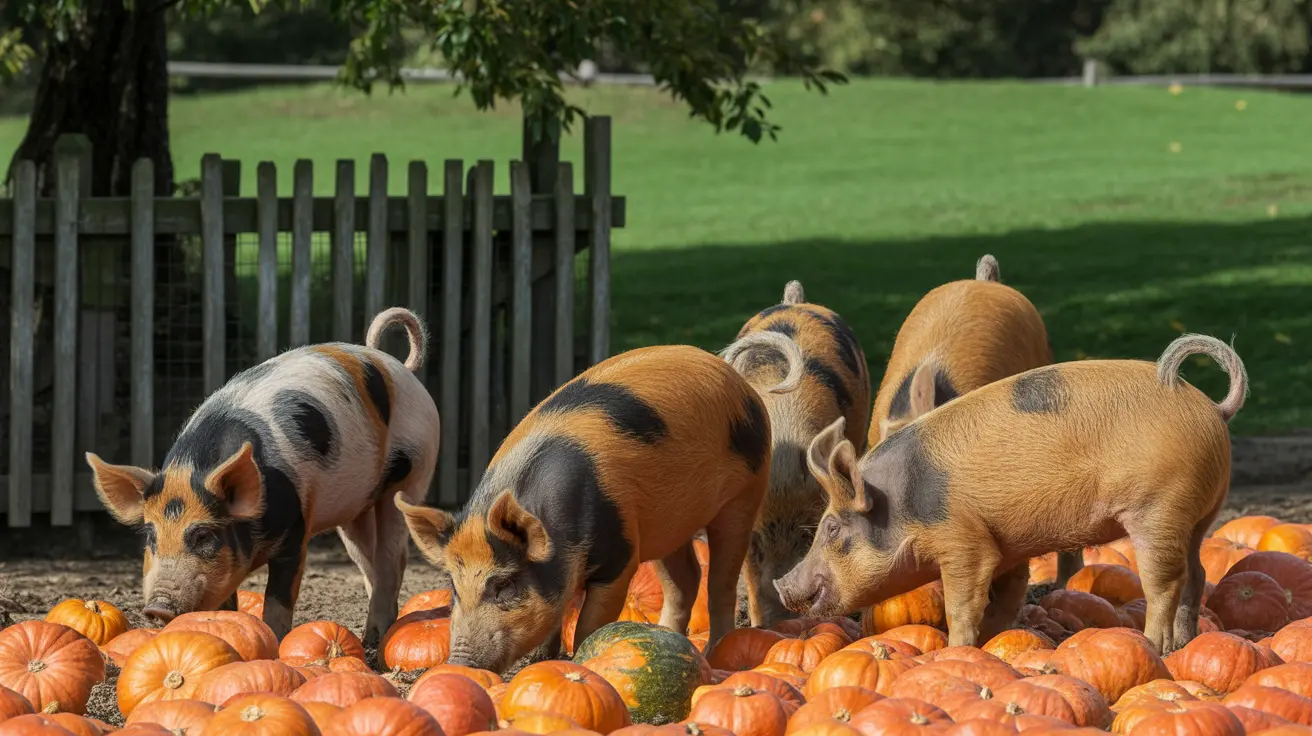How Seasonal Enrichment Benefits Zoo Animals
The Milwaukee County Zoo is demonstrating the importance of zoo animal enrichment through an engaging fall activity that delights both animals and visitors alike. Recent footage from the zoo captures memorable moments of an Amur tiger and Kunekune pigs interacting with pumpkins, showcasing how seasonal enrichment activities stimulate natural behaviors in captive animals.
These enrichment sessions are carefully designed to promote physical activity and mental stimulation while providing nutritional benefits for the zoo's diverse residents. The activities align with modern zoo practices that prioritize animal welfare through environmental enrichment.
Natural Behaviors on Display
Amur Tiger Enrichment
The footage reveals the impressive Amur tiger engaging with pumpkins in ways that mirror their wild hunting behaviors. The big cat can be seen batting at the seasonal gourds, demonstrating the same predatory skills these magnificent creatures would use in their natural habitat. This type of enrichment helps maintain the tiger's physical fitness and mental acuity.
Kunekune Pig Behavior
The zoo's Kunekune pigs display their natural foraging instincts as they investigate and consume the pumpkins. These behaviors are essential for their well-being, as they allow the pigs to express their species-typical rooting and exploratory behaviors, even in a managed care setting.
Benefits of Environmental Enrichment in Zoos
Environmental enrichment plays a crucial role in modern zoological practices. These activities:
- Reduce stress and prevent boredom
- Encourage physical exercise
- Promote problem-solving skills
- Stimulate natural hunting and foraging behaviors
- Support overall animal welfare
Seasonal Zoo Activities
The pumpkin enrichment program exemplifies how zoos can incorporate seasonal elements into their animal care routines. These activities not only benefit the animals but also provide educational opportunities for visitors to learn about animal behavior and welfare.
Zoo Animal Welfare
Professional zoo staff carefully monitor these enrichment sessions to ensure they meet the highest standards of animal care. The activities are designed to be both safe and stimulating, taking into account each species' unique needs and natural behaviors.
Frequently Asked Questions
Why do zoos give pumpkins to animals like Amur tigers and Kunekune pigs?
Zoos provide pumpkins as enrichment to stimulate natural behaviors such as batting, tearing, and foraging. Pumpkins serve as a healthy, seasonal treat and help meet animals' psychological and physical needs by encouraging play, problem-solving, and exploration.
How does pumpkin enrichment benefit the health and well-being of zoo animals?
Pumpkin enrichment promotes animal welfare by reducing stress and boredom, increasing physical activity, and encouraging species-appropriate behaviors. Nutritionally, pumpkins provide fiber and vitamins that complement the animals' diets safely for those that tolerate plant matter.
Can visitors see pumpkin enrichment activities at zoos, and how do these events support education and conservation?
Yes, seasonal events like "Boo at the Zoo" feature pumpkin enrichment demonstrations that delight visitors and educate them about animal care, natural behaviors, and conservation. These public programs help raise awareness and promote empathy for wildlife.
Conclusion
The Milwaukee County Zoo's pumpkin enrichment program demonstrates the ongoing commitment of modern zoos to animal welfare and education. Through these carefully planned activities, visitors can witness firsthand how environmental enrichment supports the physical and psychological well-being of zoo animals while learning about wildlife conservation and animal behavior. These seasonal programs continue to evolve, ensuring that zoo residents receive the highest quality care while educating and inspiring the public about wildlife preservation.






